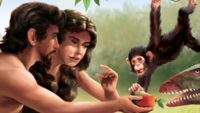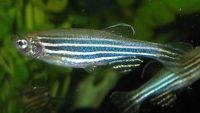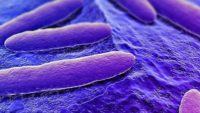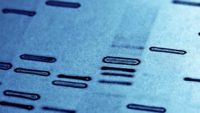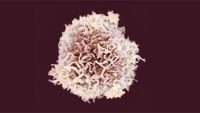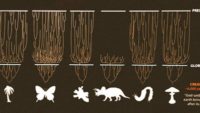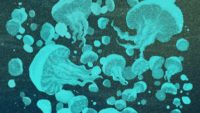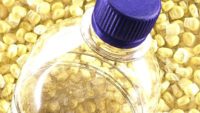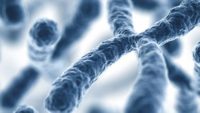In the mid-1800s, a mild Augustinian friar named Gregor Mendel crossbred pea plants and pioneered the beginnings of understanding inherited traits. Genetics has come a long way since then. Neither Mendel nor Charles Darwin knew anything about the incredible molecule of life, DNA. Today, papers are published daily in science journals describing new discoveries of DNA’s role as a regulator and repairman. Scientists… More… …read more Source: icr.org
Within the past 20 years or so, dozens of papers have been written regarding the human microbiome. Microbiota inhabit a variety of niches in the human body, with the gut being the primary location. Remarkably, “The human gut has the highest known cell densities of any microbial habitat on Earth.”1 The number of microbiome cells number into the trillions for a single person. More… …read more Source: icr.org
By Ken Ham It’s becoming increasingly common to meet Christians, especially leaders in Bible colleges and seminaries, who reject the historicity of Adam and Eve. One popular view, espoused by well-known scientist Dr. Francis Collins and others, is that Adam and Eve were just representatives of a collective of 10,000 hominins (that is, if they even existed at all). Yet this kind of thinking is far from the biblical view of the first humans. Scripture hinges our current sin-bound state on the sin of the first man, Adam: Therefore, just as sin came into the world through one man, and [More]
By Ken Ham Zebrafish are one of the most commonly used research animals in the world—the lab rats, if you will, of the fish world—and various scientific studies use them for a wide variety of purposes. Because of their frequent use, zebrafish often show up as part of evolutionary research, including a recent study comparing their scales to hair and feathers. This particular study looked at the molecular mechanisms of scale development in zebrafish, something that had been relatively overlooked until now. The article begins with the statement, When sea creatures first began crawling and slithering onto land about 385 [More]
Do these pests have a place in God’s ‘very good’ creation? Read More
Groups of plain-tailed wrens can sing a 4-part avian chorus with ease. Read More
“These are, high, high, highly intelligent creatures,” said conservation biologist Reese Halter.1 Halter was speaking of the fascinating bee. Bees are already famous regarding their ability to communicate with other bees through complex dancing routines. Halter’s team also found that bees have puzzle-solving abilities. In 2006, scientists were amazed to discover that bees have a biological clock. … More… …read more Source: icr.org
Certain evolutionary scientists have talked of Lucy since the 1970s as a supposed ape-like ancestor of humans. It’s probably the world’s most famous extinct ape. The Lucy kind was roughly the size and shape of a chimpanzee. Scientists recently described a tiny foot from a toddler of this extinct species. But this foot looks like an ape’s, which clearly clashes with the LiveScience article title, “Ancient Hum… More… …read more Source: icr.org
Human error shows scientists are just as prone to making mistakes as anyone else …read more Source: creation.com
We humans may think our self-awareness marks us out as special but atheists insist it’s merely an illusion brought about by our brain chemistry. Why, then, do cognitive scientists, psychologists and philosophers fail to explain consciousness? …read more Source: creation.com
A team of researchers from Israel and the U.S. are searching for animals that can edit their own RNA molecules. They encountered a standout. Unlike other animals that edit only a small fraction of the RNA that spells out protein sequences, squid cells edit their RNA by the bushel. The team described their results in 2015. Since then, they have dived deeper to look for more answers. Along the way, they stumbled over a difficult question that… More… …read more Source: icr.org
By John UpChurch The astonishing similarity of designs among unrelated creatures is powerful evidence of a Common Designer …read more Source: AIG Daily
A former evolutionist who has worked as a research biologist now has a museum that highlights creation. …read more Source: creation.com
Trilobites (a type of arthropod) appear in sedimentary rocks as part of the Cambrian Explosion.1 In this episode, all the major animal groups first appear as fossils. They appear suddenly, fully-formed, and functional, and the older rock layers below them contain no ancestors.2,3 Creation scientists explain the sudden appearance of these Cambrian-system fossils as evidence of the first major advance o… More… …read more Source: icr.org
By Ryan MacKay This article explains the mysterious origin of a new strain of Serratia marcescens that produces prodigiosin up to 40°C without any enrichment to media. …read more Source: AIG Daily
By Elizabeth Sled We have been created fearfully and wonderfully by our Creator God, and the human body showcases God’s intricate design. …read more Source: AIG Daily
A recent article in New Scientist illustrates how difficult it is to classify various forms of life, such as dinosaurs, into groups.1 The article, based on a cover story (and a follow-up story) in Nature, was titled “Dinosaur Divisions: Family tree gets Radically Redrawn.”2 The main problem with all classification systems is that they depend on the specific criteria used to group life into… More… …read more Source: icr.org
By Daniel Criswell With our ability to rapidly sequence genes, the ABO blood group is also proving to be a valuable asset for determining human migration patterns and origins. …read more Source: AIG Daily
Green blood is not something you see every day. The recent search for why several species of lizards found in New Guinea have green blood assumes an evolutionary origin for these creatures. It seems like the researchers started with a discovery that indicates green blood developed independently in four species from red-blooded ancestors.1 More… …read more Source: icr.org
Taking apart the argument that says consciousness, rather than being a product of the supernatural soul, emerges from the complex physical structure of our brains …read more Source: creation.com
By Daniel Criswell We’ve now unlocked some of our body’s incredible secrets for rapid response to the ever-changing threat from microbe invaders. …read more Source: AIG Daily
By Ken Ham Nine out of ten species alive today have arisen in the last 200,000 years, according to a genetic study looking at select portions of DNA from 100,000 species. …read more Source: AIG Daily
By John UpChurch Recent invasions of massed jellyfish prompted new studies of these ocean terrors. Scientists were astonished by what they found. …read more Source: AIG Daily
Amazingly, deaf children stranded by themselves develop their own complete sign language. …read more Source: creation.com
By Dr. David A. DeWitt Our failure to remember unimportant details isn’t a sign of senility. It shows our brain is working quite well, sorting out things that matter! …read more Source: AIG Daily
By Dr. Don DeYoung The master Engineer provided all the parts for plastics, long before the modern Plastic Age began. …read more Source: AIG Daily
By Ken Ham We typically think of blood as red, but six lizard species in Papua New Guinea bleed green, not red. A new study claims this green blood evolved four times. …read more Source: AIG Daily






















